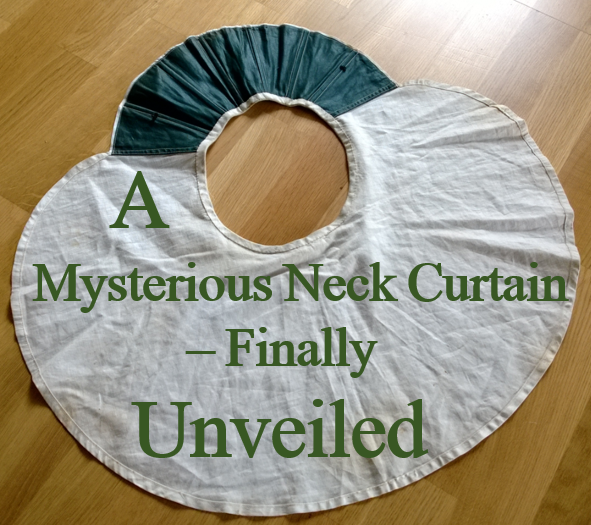 Neck flaps or neck curtains to be attached on a sun helmet are much rarer to find than any kind of helmet itself. No wonder one tries to get hold on any flap that comes along. Like the one that is the subject of this article. Now, this example but turned out to be something completely different, than a piece of military equipment. But – nevertheless – it is interesting to learn more about it.
Neck flaps or neck curtains to be attached on a sun helmet are much rarer to find than any kind of helmet itself. No wonder one tries to get hold on any flap that comes along. Like the one that is the subject of this article. Now, this example but turned out to be something completely different, than a piece of military equipment. But – nevertheless – it is interesting to learn more about it.
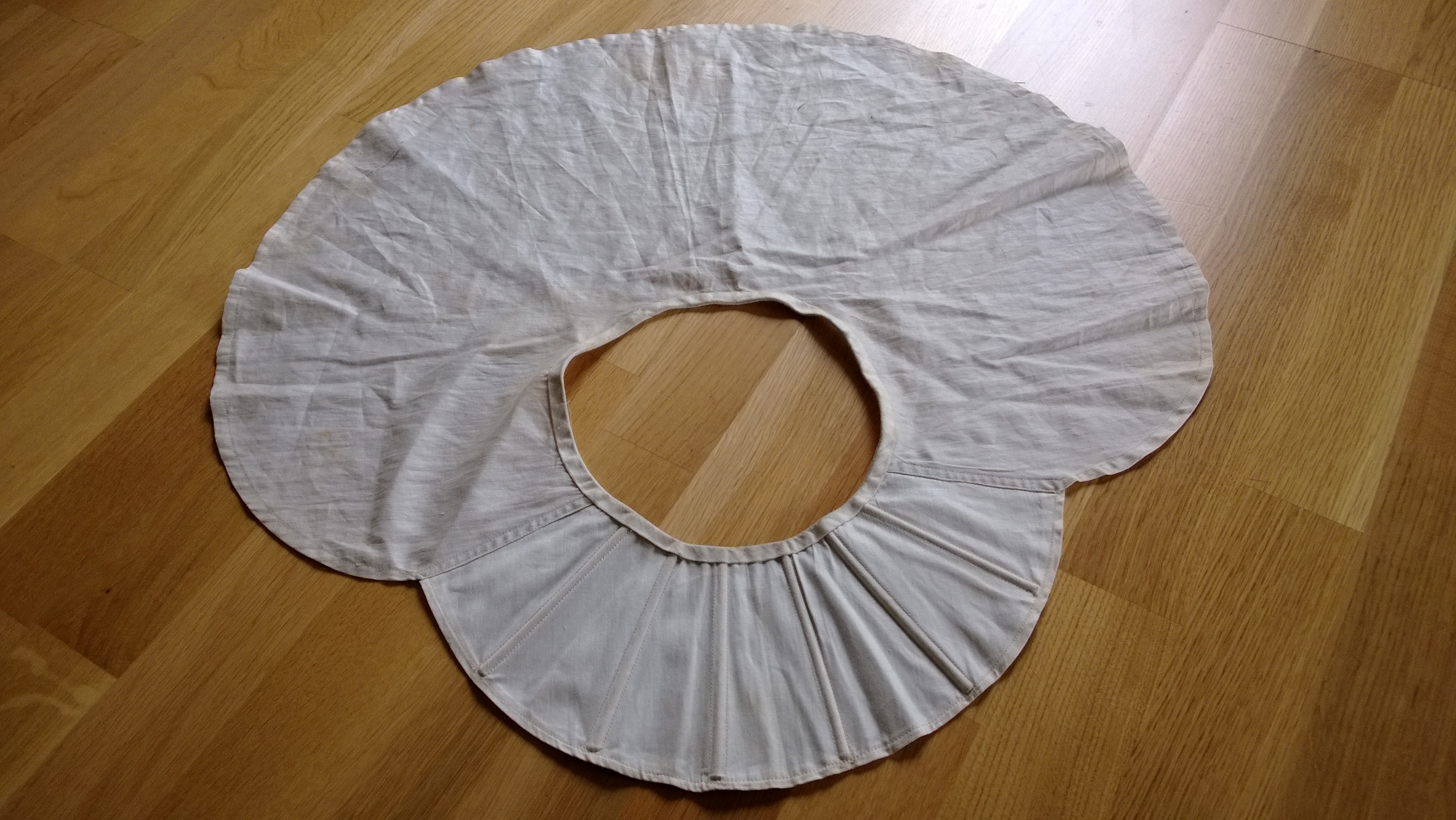
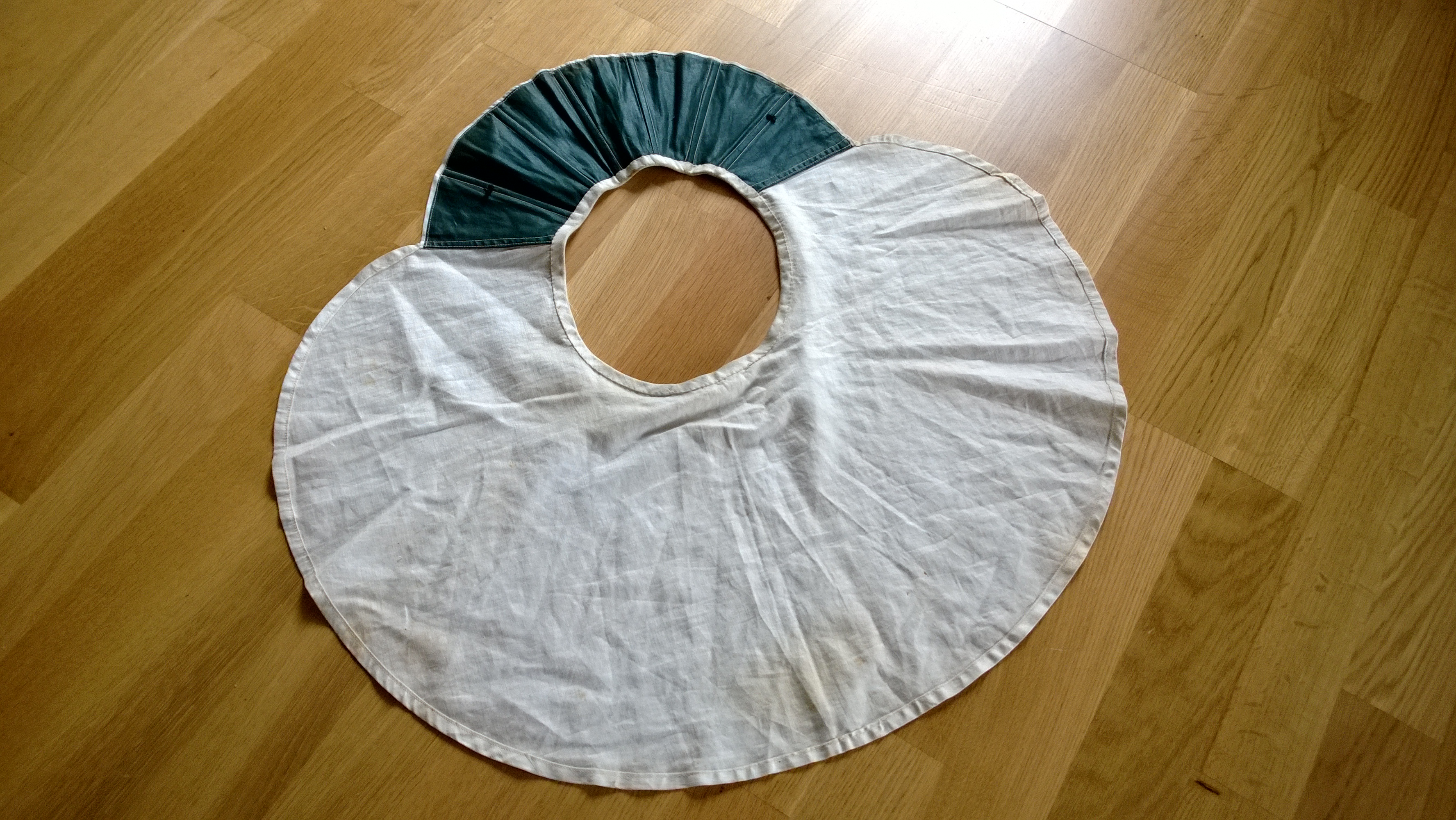 On the first view, this piece of white cloth recalls the pattern of British curtains as they were issued for the campaigns in the Sudan in 1898, earlier in India and in Mesopotamia in World War One.
On the first view, this piece of white cloth recalls the pattern of British curtains as they were issued for the campaigns in the Sudan in 1898, earlier in India and in Mesopotamia in World War One.
Here is a round piece of cloth with a large diameter and an oval opening in the middle, shaped to cover the back and the sides of the head. But, compared to the British examples just mentioned, this cover is not made of khaki drill, but of comparatively light, white cloth and not quilted. On the other hand, a cover for the face is added, strengthened on the lower side with dark green cloth, exactly of the kind often seen under the brims of sun helmets, here intended to give additional protection to the eyes. Besides, little rods are sewn in between both layers of fabric, to prevent the construction to fall down on the wearer´s nose.
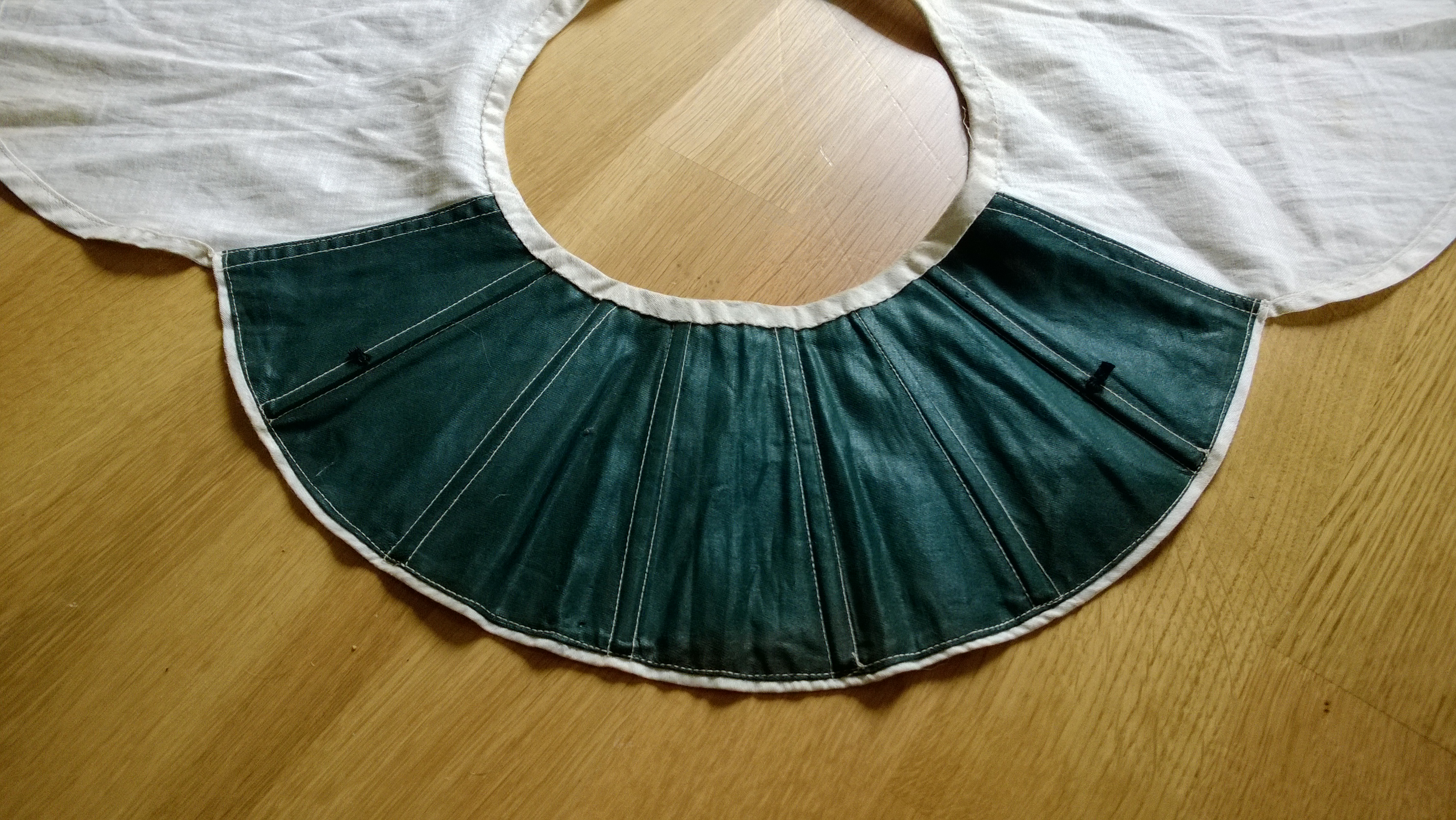
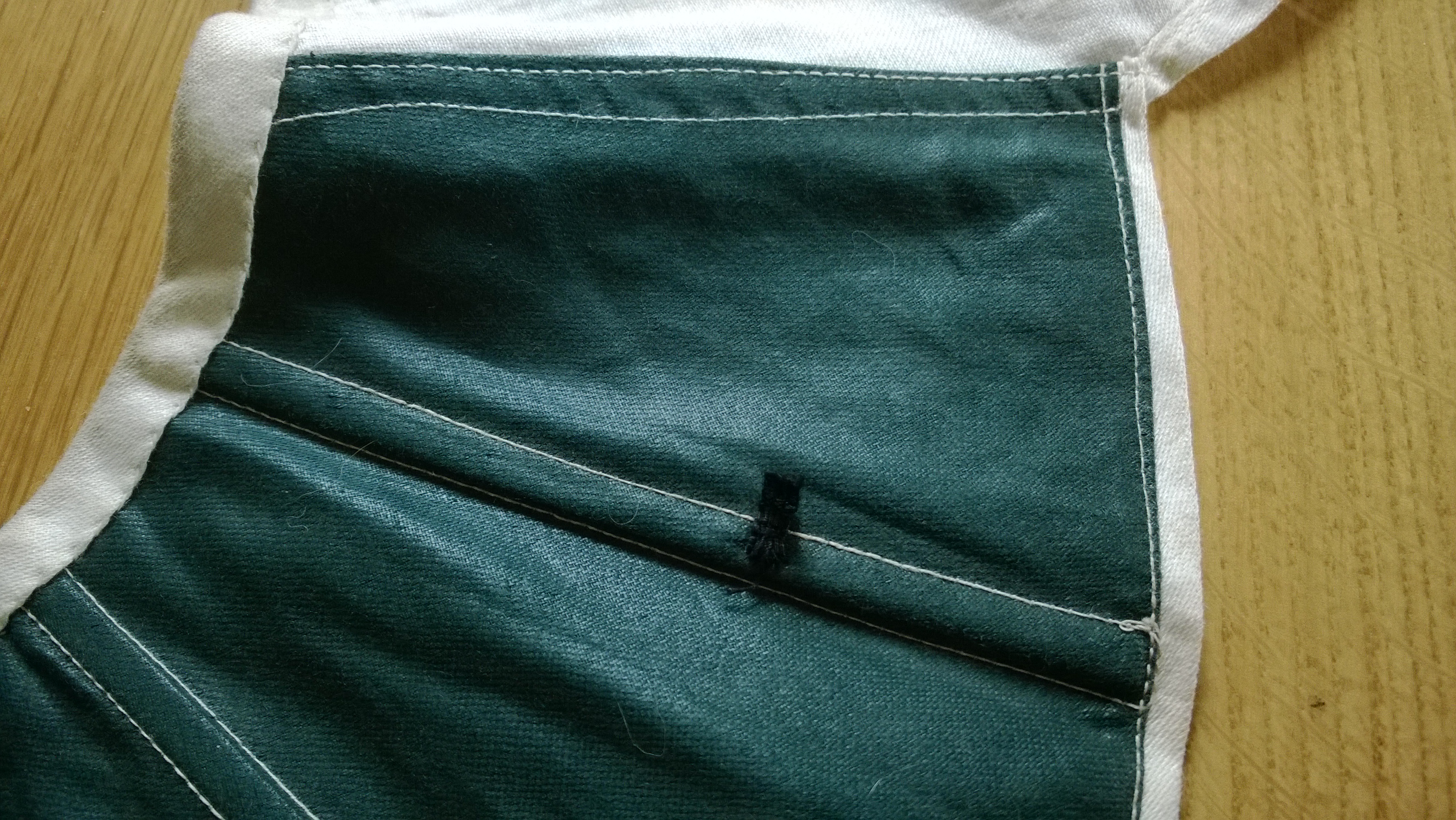 The item turned up in France, attributed to have be worn on a French model 1878 or 1886. And indeed, put around an 1886 pattern cork helmet, the cloth would in a way increase the protection against the sun, as provided by that comparatively narrow brimmed kind of hat.
The item turned up in France, attributed to have be worn on a French model 1878 or 1886. And indeed, put around an 1886 pattern cork helmet, the cloth would in a way increase the protection against the sun, as provided by that comparatively narrow brimmed kind of hat.
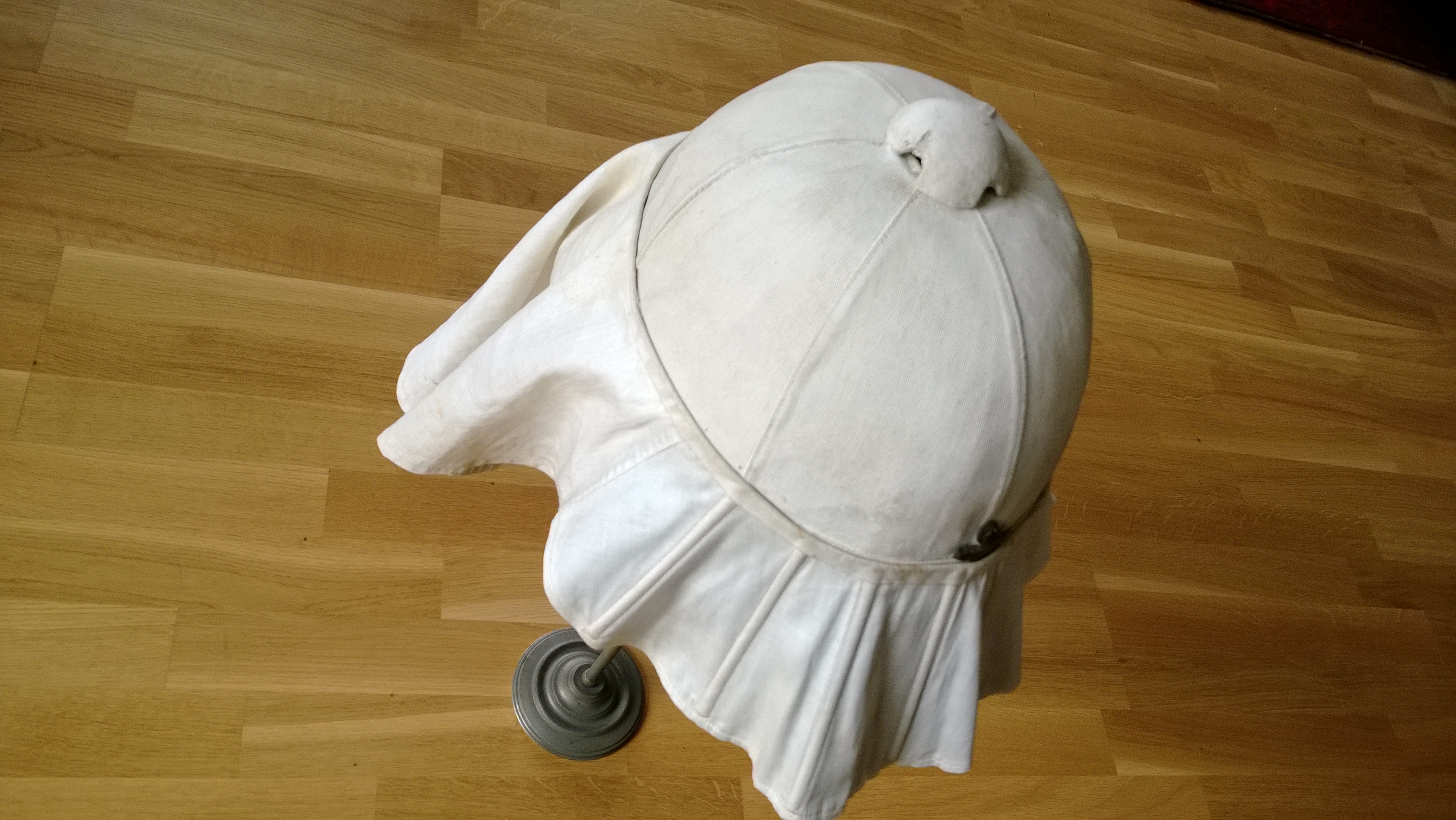
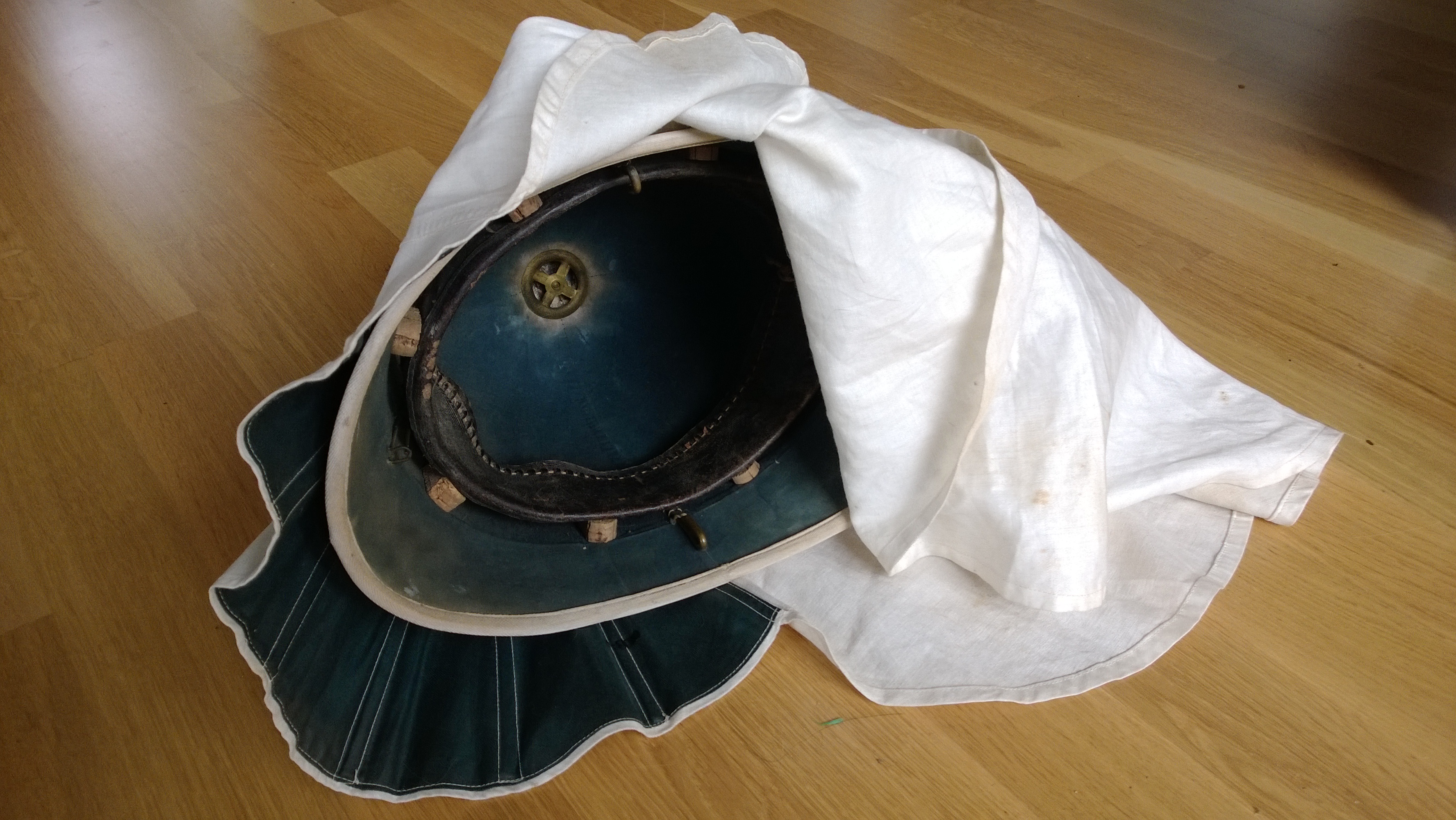 But: Would the addition at the front make any sense? Not really. Indeed – it collapses and reaches over the nose down to the mouth. As an addition to a French regulation helmet, the benefit of this construction is more than doubtful.
But: Would the addition at the front make any sense? Not really. Indeed – it collapses and reaches over the nose down to the mouth. As an addition to a French regulation helmet, the benefit of this construction is more than doubtful.
The true origin of this curtain came to light some years later when I discovered it in an old emporium´s catalogue, not dated, but with an old pencil entry of “1910” – a year matching to the fashion of the clothing offered.
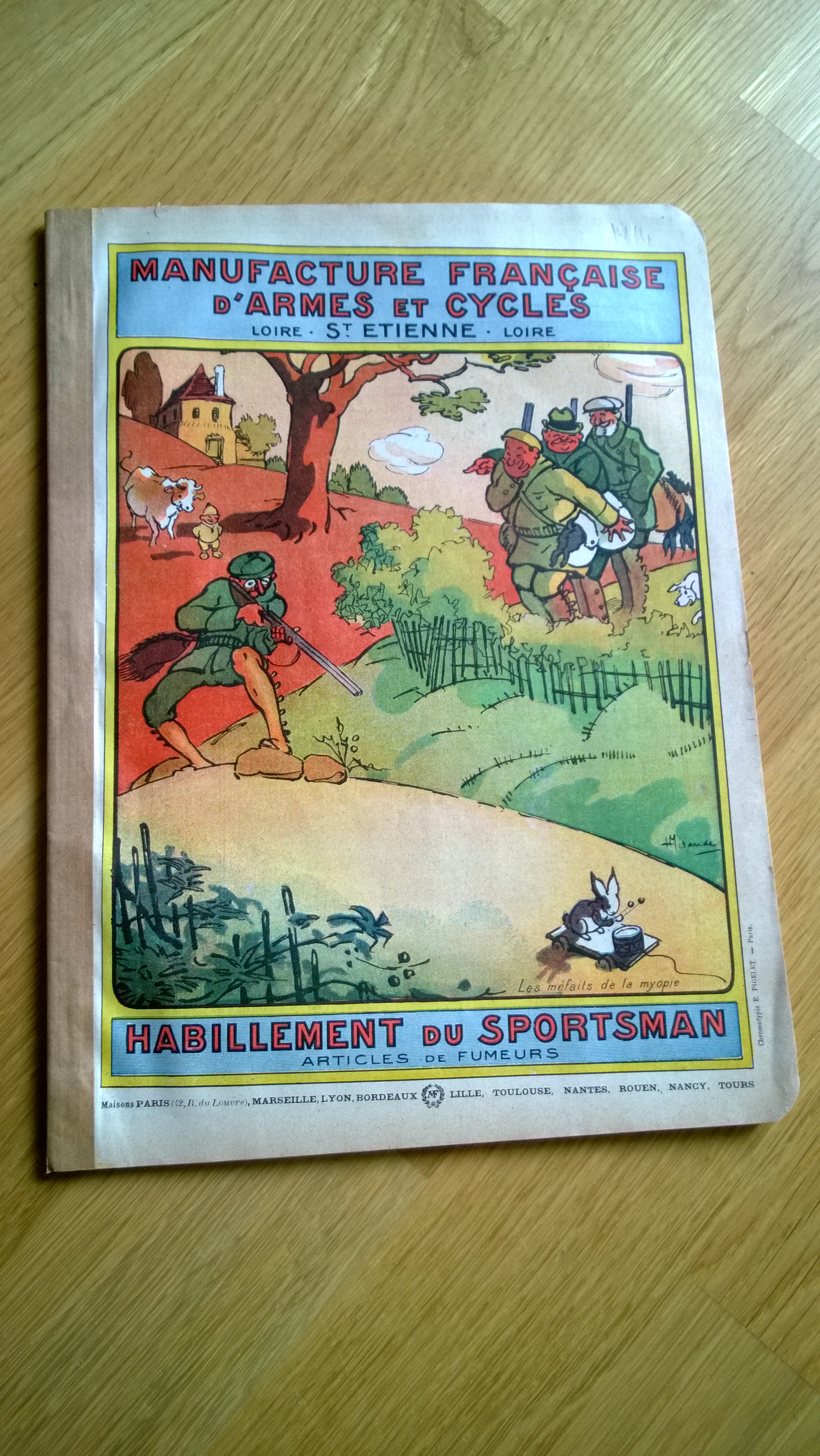 For “Manufrance”, which is the commercial name of the “Manufacture Française d’Armes et Cycles de St. Etienne”, founded in 1887, sold all kind of things, beyond arms and bicycles, as the name could indicate, in their voluminous catalogues – alike, for example, the London Army & Navy Stores. Here as well we find uniforms, field equipment and sun helmets.
For “Manufrance”, which is the commercial name of the “Manufacture Française d’Armes et Cycles de St. Etienne”, founded in 1887, sold all kind of things, beyond arms and bicycles, as the name could indicate, in their voluminous catalogues – alike, for example, the London Army & Navy Stores. Here as well we find uniforms, field equipment and sun helmets.
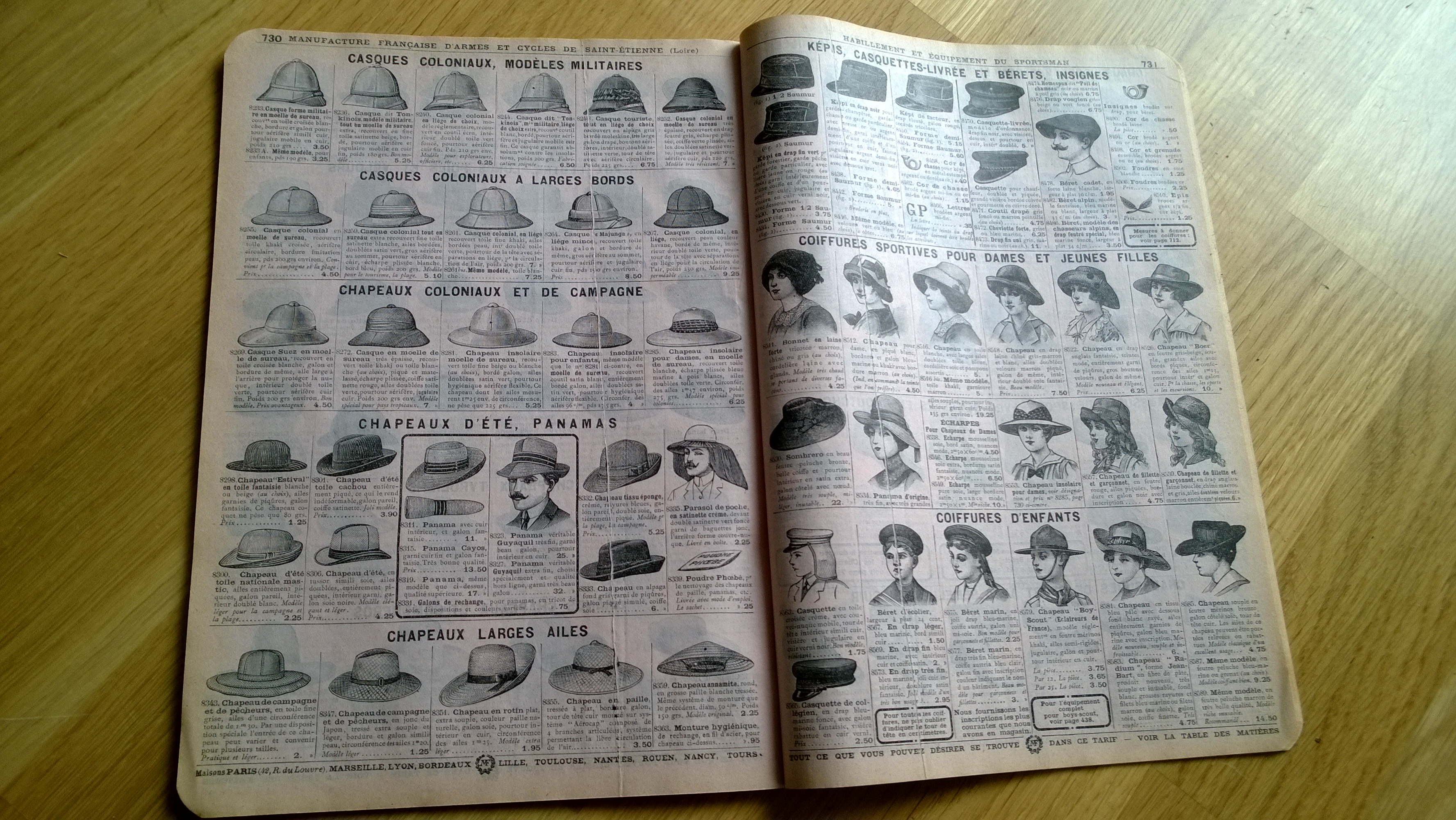
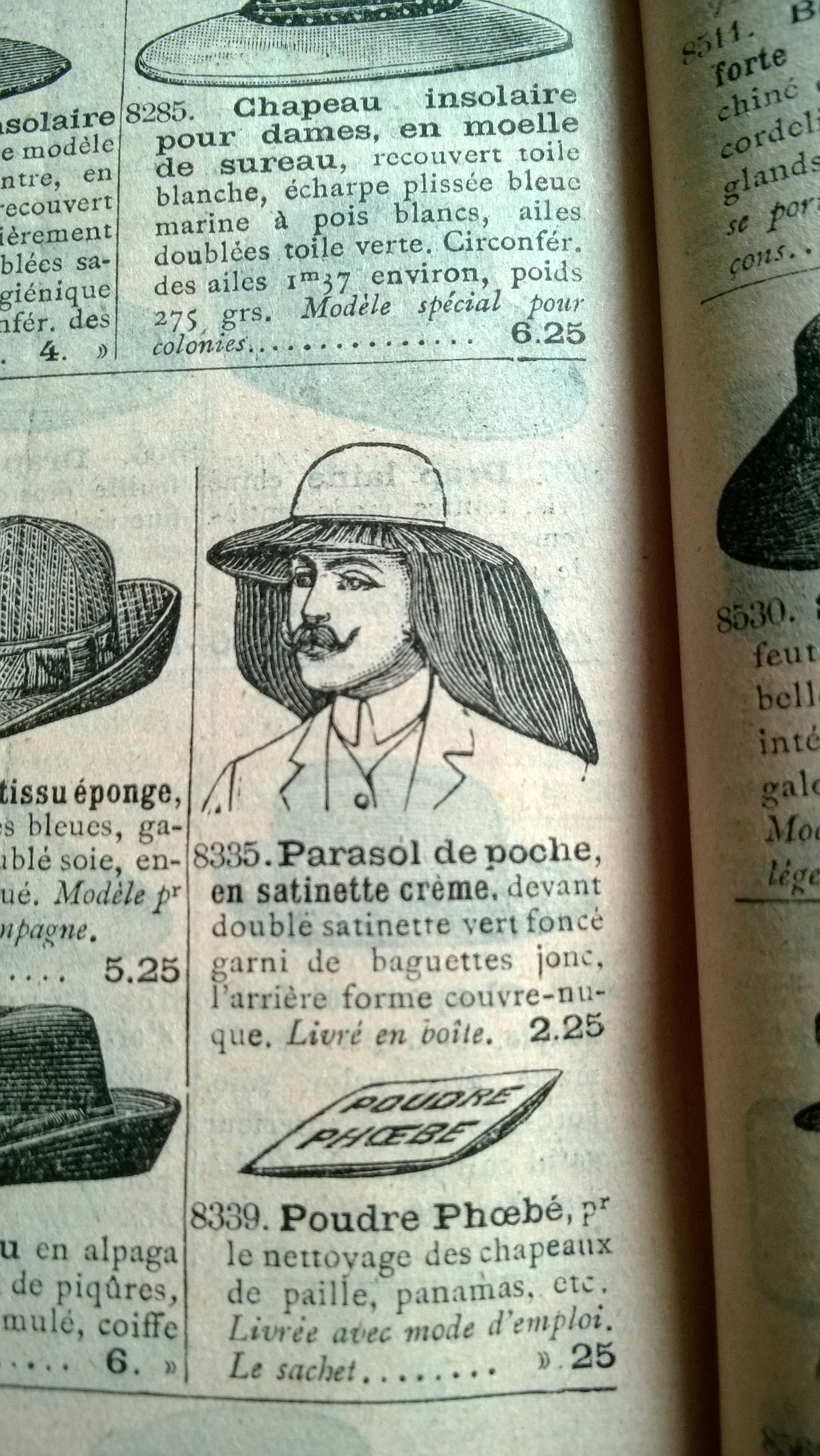 And – our neck curtain. It is called “Parasol de Poche” – a “pocket sun umbrella”!
And – our neck curtain. It is called “Parasol de Poche” – a “pocket sun umbrella”!
“Parasol de Poche en satinette crème, devant double satinette vert foncé garni des baguettes jonc, lárriere forme couvre-nuque. Livrè en boite.”
“Pocket sun-umbrella in crème colored satin. At the front, green double satin with bamboo sticks sewn in, at the back neck cover. Comes in a box.”
The description matches exactly, including the green backing. In addition we learn, that the “Parasol” obviously came originally in a little box for transport – unfortunately lost with this rare surviving example.
As the illustration shows, this cloth was meant for civilian use – for example to be worn on a bowler hat. Of course, this item could have been a convenient, easy to transport thing to a civilian gentleman living in Algiers or Saigon, to be added to his plain clothes in the heat of the noon.
But more likely, I think, customers in mind of Manufrance were gardeners or wine-growers in the hot South of France
Roland Gruschka
January 2016
